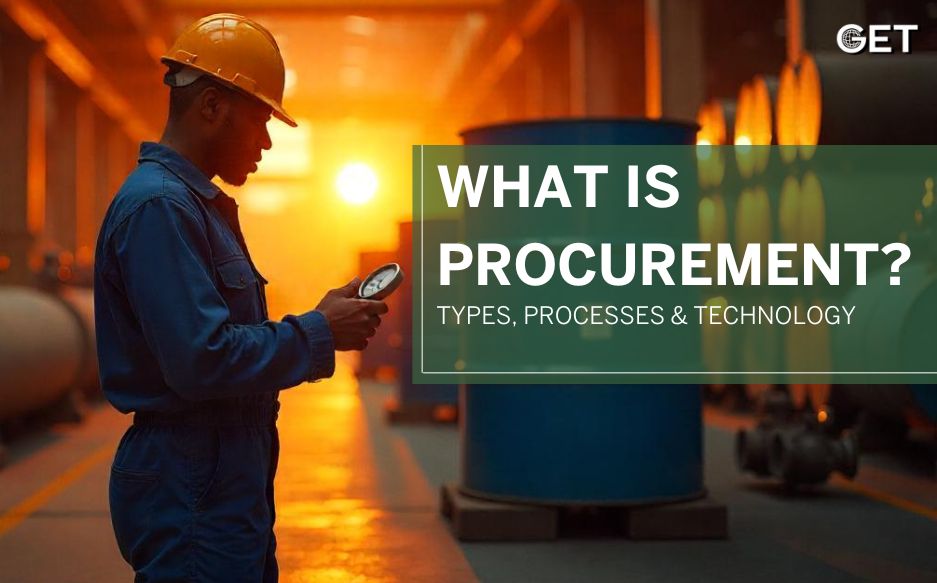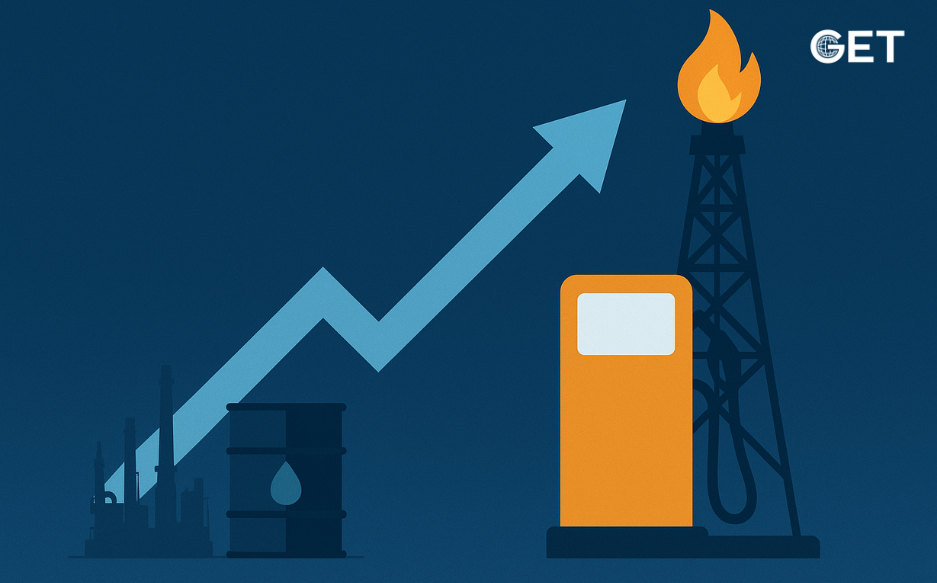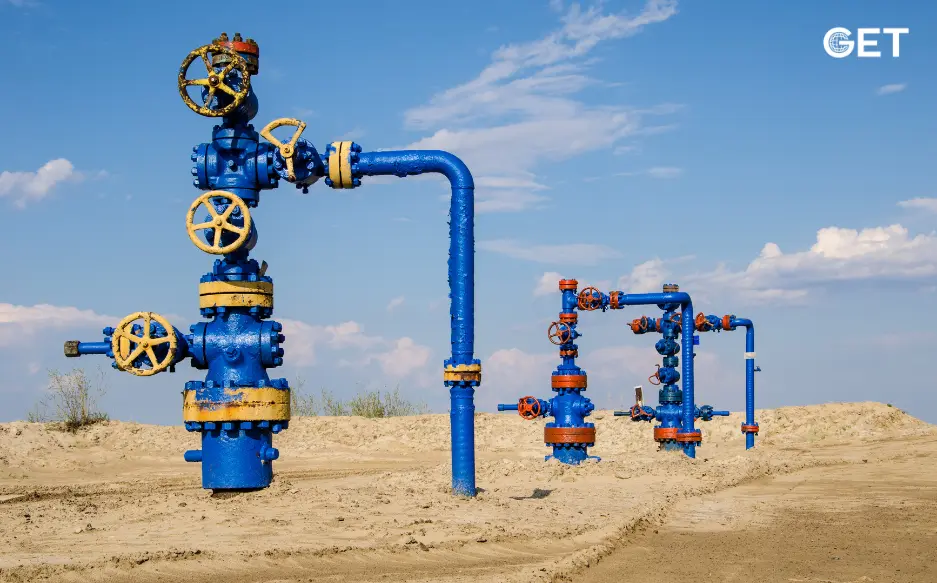
In the fast-paced world of oil and gas, especially in upstream operations like exploration and drilling, procurement is much more than just buying equipment. It is a strategic process that ensures the timely availability of the right goods and services at the right place, time, and cost.
For upstream turnkey service providers like GET Global Group, procurement is the engine that keeps the field operations running smoothly. From sourcing specialized tools to contracting expert services, procurement plays a critical role in maintaining uptime and controlling costs.
In this blog, we’ll break down what procurement means in the context of oil and gas industry, especially the upstream segment, discuss its types and process, explore the technologies transforming it, and share how GET Global Group is leading the charge with smart, efficient, and ethical procurement practices.
In simple terms, procurement is the process of finding, acquiring, and managing goods and services. In upstream oil and gas—which includes activities like seismic surveying, drilling, well construction, and early production—procurement becomes a mission-critical function.
Every exploration project relies on a complex web of materials (like drill pipes, cement, casings), services (like geotechnical surveys, directional drilling, and rig operations), and compliance (permits, HSE standards, certifications). The job of procurement is to tie all these elements together, cost-effectively and without delays.
Understanding the different types of procurement helps operators manage budgets and project timelines efficiently. Here’s how procurement typically works in upstream:
1. Direct Procurement
This refers to the sourcing of core materials and services that directly impact the production process. For instance, drill bits, mud systems, casing pipes, wellheads, and pressure control equipment fall under this category. Delays or substandard quality in direct procurement can halt entire operations.
2. Indirect Procurement
Indirect procurement deals with supporting goods and services that are not directly involved in production but are still essential. This includes IT systems, safety gear, camp accommodation, fuel, and transport. While indirect, this procurement type still impacts productivity and crew wellbeing.
3. Project-Based Procurement
This is procurement tailored to specific projects, such as the development of a new well pad or a seismic survey campaign. Project-based procurement is time-sensitive and highly customized.
The procurement process in upstream oil and gas industry is rigorous and structured. Here’s how a typical cycle looks:
1. Requirements Planning
Everything starts with identifying what’s needed. This could be driven by a new drilling campaign or scheduled maintenance. The planning team defines quantities, specifications, timelines, and budget.
2. Supplier Selection & Pre-Qualification
Due to the high-risk nature of upstream operations, suppliers are pre-qualified based on their technical capabilities, safety records, certifications (like ISO, API), and financial health.
3. Tendering & Bidding
A formal tender is issued inviting selected vendors to bid. This ensures competition and transparency. Evaluation is based not only on price but also on delivery timelines, warranties, technical fit, and support.
4. Negotiation & Contracting
Once a preferred vendor is selected, both parties negotiate terms and sign a legally binding contract. This includes penalties, delivery guarantees, insurance, and confidentiality clauses.
5. Logistics & Delivery
Delivery planning includes customs clearance, inland logistics, storage, and on-site deployment—especially critical when rigs are located in remote desert or offshore environments.
6. Inspection & Quality Check
Every item received is thoroughly checked against specifications. Non-conforming materials can delay operations, so this stage is critical.
7. Performance Monitoring
Procurement teams regularly review supplier performance in terms of quality, delivery, responsiveness, and cost compliance. These metrics help in future sourcing decisions.
Procurement teams in upstream face unique challenges:
· Remote Locations: Delivering materials to desert rigs or offshore platforms demands expert logistics.
· Market Volatility: Oil price fluctuations can affect material prices and budget planning.
· Compliance & Documentation: Meeting local regulatory, environmental, and HSE standards is mandatory.
· Supply Chain Risks: Global disruptions (like COVID-19 or geopolitical tensions) can halt supply chains.
Technology is transforming how procurement works in the oil and gas sector. Today, many upstream companies—including GET Global Group—are embracing digital tools to enhance speed, accuracy, and compliance.
1. E-Procurement Systems
These platforms automate vendor selection, bidding, and contract approvals, saving time and reducing paperwork.
2. ERP Integration
Modern procurement tools are integrated with enterprise resource planning (ERP) software to sync finance, inventory, and logistics.
3. Blockchain for Traceability
Blockchain adds a layer of security and transparency by recording all transactions in a tamper-proof format, useful for verifying materials and contracts.
4. AI and Predictive Analytics
AI is used for demand forecasting, supplier risk scoring, and cost optimization—especially valuable in long-term drilling programs.
Read Also- What is Crude Oil? From Extraction to Global Impact
As a trusted upstream turnkey service provider, GET Global Group understands the importance of efficient procurement. Our team ensures every project is delivered on time, safely, and within budget through strategic sourcing and advanced technology.
Here’s how GET is making a difference:
· Vendor Network: We maintain relationships with top-tier local and international suppliers to ensure material quality and rapid availability.
· Integrated Systems: Our procurement process is integrated with our operations and logistics team, creating a smooth flow from purchase to delivery.
· Local Content Compliance: We support Saudi Arabia’s Vision 2030 by actively engaging local vendors and service providers where possible.
· Cost Transparency: GET follows a fully transparent invoicing model, avoiding hidden markups and ensuring clients know what they’re paying for.
Procurement in upstream oil and gas is not just about purchasing—it’s about ensuring project success. In an industry where every minute of downtime costs thousands of dollars, smart procurement is the backbone of operational efficiency.
With the rise of digital tools and smarter processes, companies like GET Global Group are setting new standards in procurement—ensuring that every crew member has the tools, services, and systems needed to succeed in the field.

By Get global | December 23, 2025
Introduction to the Oil and Gas Industry When individuals think of the “oil and gas industry,” the most common associations would probably be drilling rigs, offshore platforms, or harsh working conditions. And to some extent, these are indeed the case. But in the end, the industry is still much larger […]

By Get global | December 17, 2025
As the oil and gas industry moves toward 2026, the pressure is no longer coming from one direction. Markets remain volatile. Regulations are tightening. Digital expectations are rising. At the same time, demand for reliable energy has not disappeared. What has changed is how companies respond to this complexity. Many […]

By Get global | December 11, 2025

By Get global | December 5, 2025
Turkey’s ambitions in the energy sector have taken a significant step forward as Turkish Petroleum (TPAO) ramps up drilling at its latest Black Sea discovery. The find is considered one of the most promising additions to the region’s portfolio, reshaping the conversation around Turkish gas exploration, self-sufficiency, and the future […]

By Get global | November 27, 2025
The upstream oil and gas industry is thrilling, quick-moving, and rich with opportunities—but let’s face it, it also has a lot of technical language. If you are a newcomer to the industry, changing jobs, or just wanting to enhance your knowledge about the industry, mastering the right terms can facilitate […]